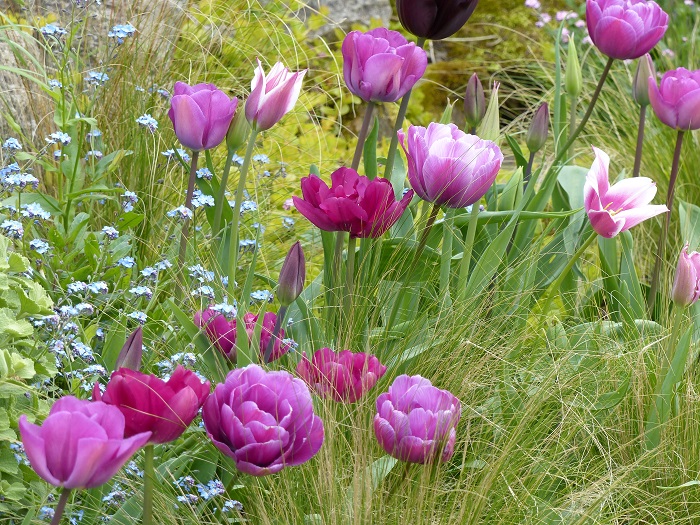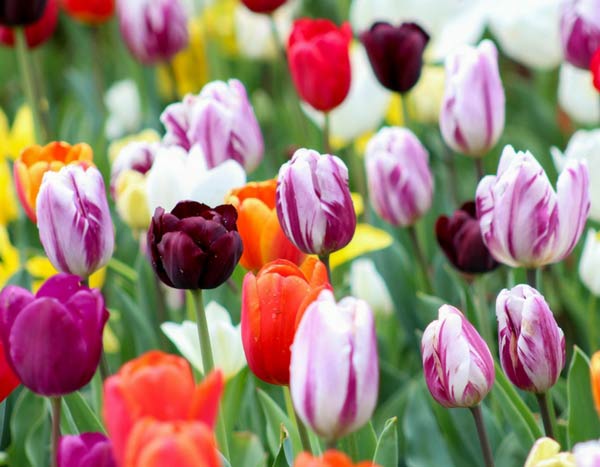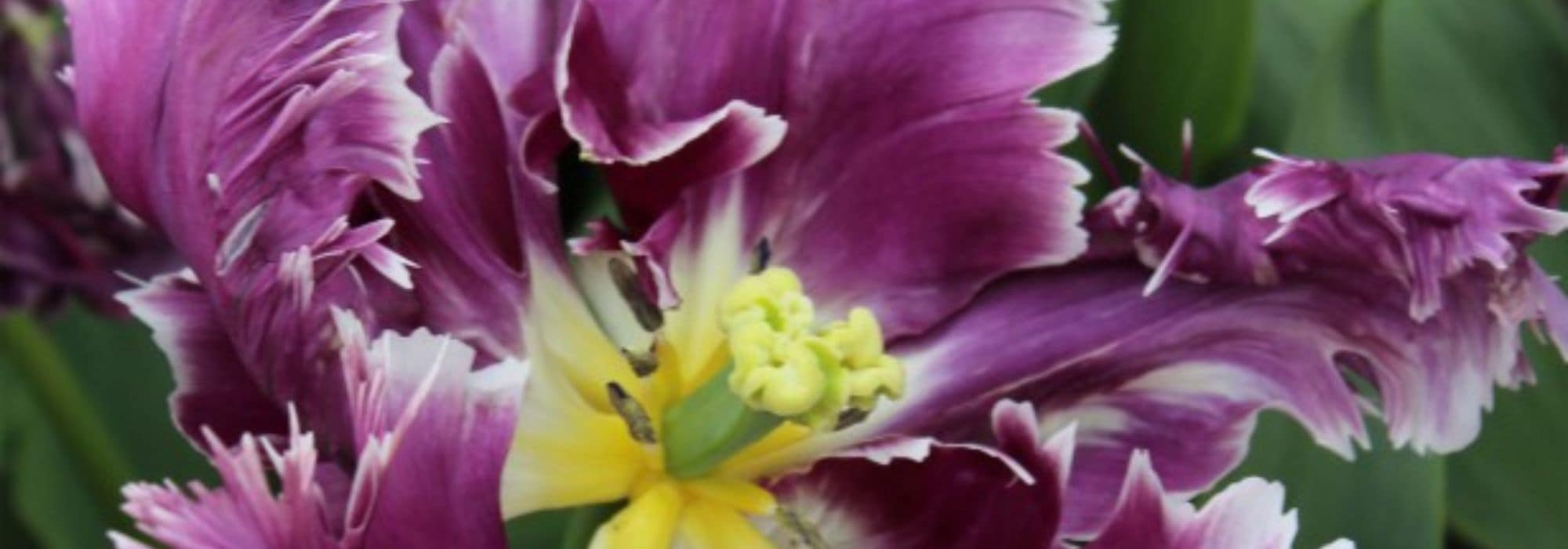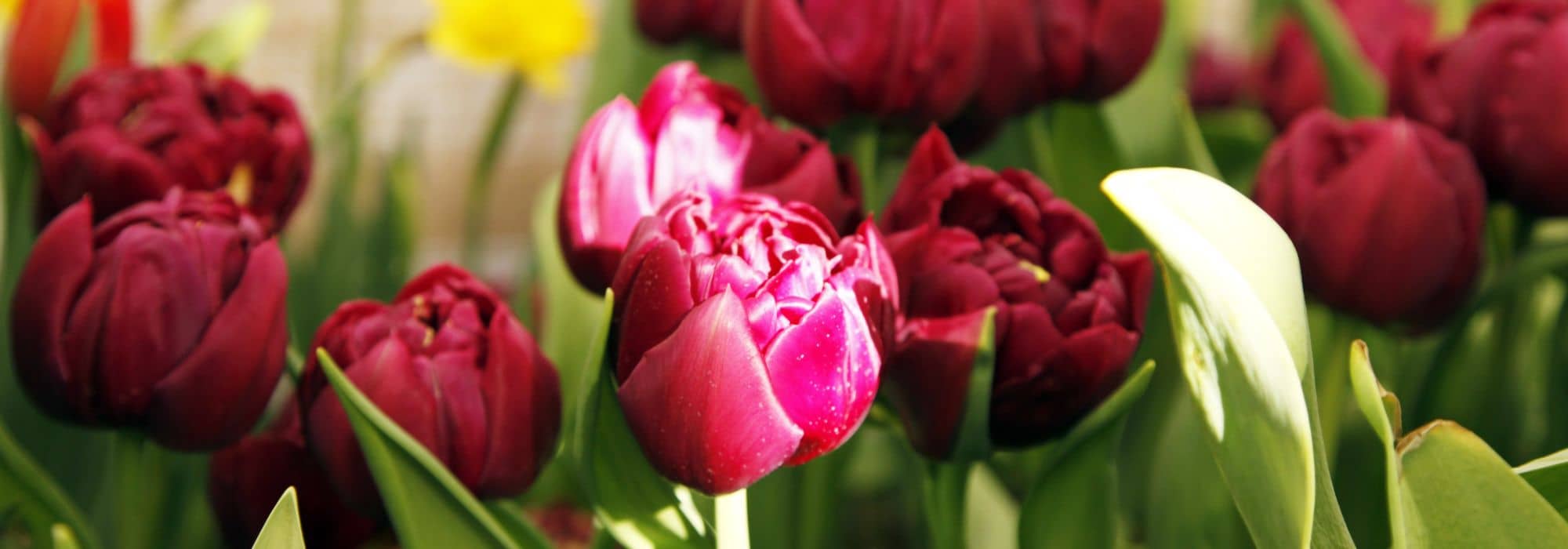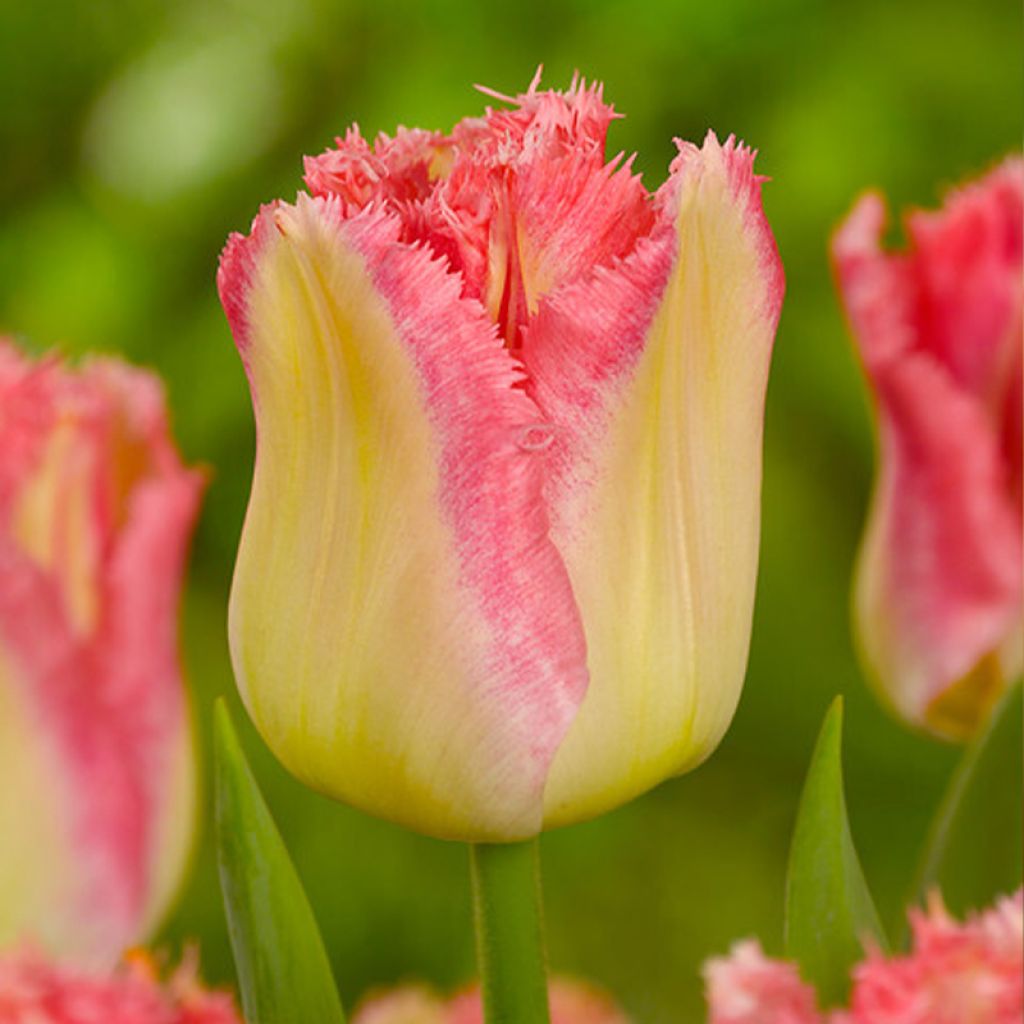

Tulipe dentelée Lingerie


Tulipe dentelée Lingerie
Tulipa crispa 'Lingerie'
Tulipa crispa Lingerie
Crisped Tulip, Curled Tulip
Special offer!
Receive a €20 voucher for any order over €90 (excluding delivery costs, credit notes, and plastic-free options)!
1- Add your favorite plants to your cart.
2- Once you have reached €90, confirm your order (you can even choose the delivery date!).
3- As soon as your order is shipped, you will receive an email containing your voucher code, valid for 3 months (90 days).
Your voucher is unique and can only be used once, for any order with a minimum value of €20, excluding delivery costs.
Can be combined with other current offers, non-divisible and non-refundable.
This plant carries a 6 months recovery warranty
More information
We guarantee the quality of our plants for a full growing cycle, and will replace at our expense any plant that fails to recover under normal climatic and planting conditions.
Would this plant suit my garden?
Set up your Plantfit profile →
Description
The Tulip 'Lingerie' is a variety of fringed tulip that is quite charming despite its small size. It bears a flower adorned with delicate lace with a beautifully brushed changing pink edge on an ivory background that becomes creamy white. It is a relatively rare variety in cultivation, rather late blooming, which pairs remarkably well with blue irises, Chinese peonies, and white, purple, or pink roses.
The Dentate Tulip 'Lingerie' belongs to the family of lilies. Of horticultural origin, registered in 2002 in the Netherlands, it is classified in the 'Crispa' group, whose main characteristic is to have finely dentate petal tips. This tulip will reach 30-35cm (12-14in) in height when in bloom. Flowering generally occurs in May, but it can be slightly later depending on the climate. The flowers are simple, of classic shape, with a slightly closed cup, overall bicoloured, in white, ivory, soft pink, fresh pink, and deep pink. The pink edge of the petals is finely cut. The flowers last a long time and allow the tulip season to be extended until May. The foliage yellows and then dries out a while after flowering. To protect your bulbs from the appetite of rodents, for example, use a plastic bulb basket.
In the world of flowers, there is truly nothing comparable to fringed tulips to spice up your spring garden with something unique. The 'Lingerie' Tulip is a very pretty flower for perennial borders, flower pots, and bouquets. Plant the bulbs in small groups of 5, alongside plants that will fill the space after flowering. To accompany it, choose, for example, white tulips ('Snow Crystal'), pink ('Pink Diamond'), or purple ('Negrita' Double) tulips. Create a lovely scene with Euphorbia amygdaloides 'Purpurea' and Iris 'Delta Blues'. By choosing fringed tulips, you will add a unique touch to your bouquets. Put very little water in their vase, just a bottom is enough. Furthermore, if your tulips open too quickly, you can add two to three ice cubes to the vase each day.
Tulipa crispa 'Lingerie' in pictures
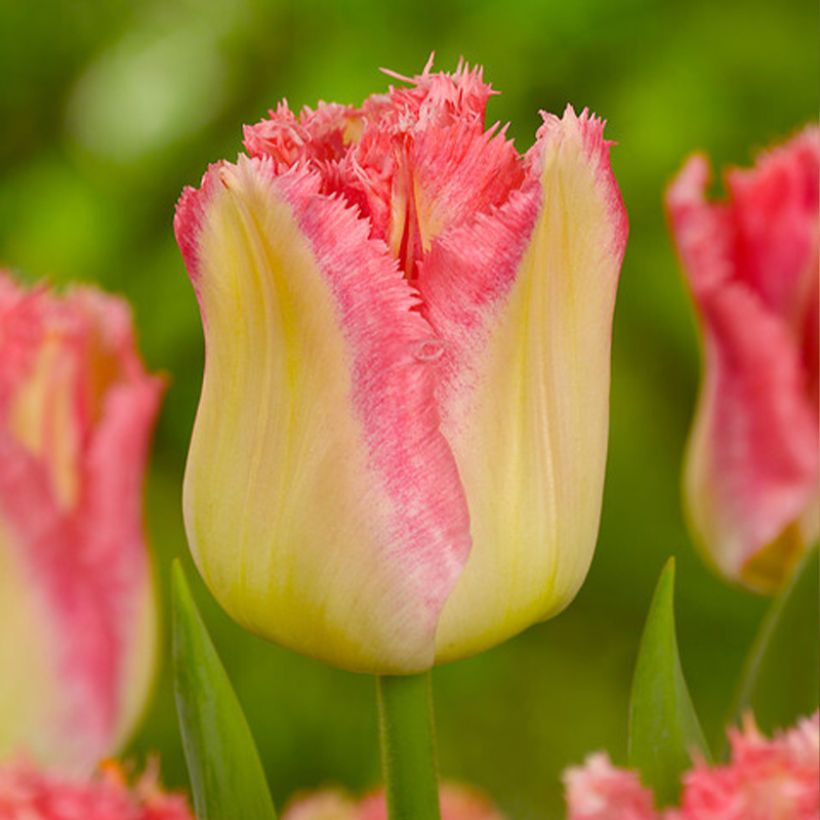

Plant habit
Flowering
Foliage
Botanical data
Tulipa
crispa
Lingerie
Liliaceae
Crisped Tulip, Curled Tulip
Cultivar or hybrid
Planting and care
Plant the bulbs in autumn, from September to December, at a depth of 15cm (6in), spacing them 10cm (4in) apart. The planting should be done in ordinary soil, slightly acidic, neutral, or slightly alkaline, loose, well-worked, and well-draining. Never add undecomposed manure or compost to the planting soil, as this could cause the bulbs to rot. The 'Lingerie' tulip will grow well in moist to dry soil. Plant it in a sunny or semi-shaded location. After flowering, it is preferable to remove the fruits to avoid exhausting the plant. Allow the leaves to completely dry before cutting them. We recommend planting Heuchera, Tiarella, and Euphorbia in the foreground of your flower beds, as their foliage will enhance the colours of your tulips and, as the season progresses, elegantly hide their yellowed leaves. Red and orange are less common in the garden, so let's take advantage of the wide range of tulips available in these colours. For an elegant effect, these tulips will be enhanced by dark green foliage, such as a hedge of yews or boxwoods. Also consider dark foliage such as 'Obsidian' Heuchera.
Planting period
Intended location
Care
Planting & care advice
This item has not been reviewed yet - be the first to leave a review about it.
Haven't found what you were looking for?
Hardiness is the lowest winter temperature a plant can endure without suffering serious damage or even dying. However, hardiness is affected by location (a sheltered area, such as a patio), protection (winter cover) and soil type (hardiness is improved by well-drained soil).

Photo Sharing Terms & Conditions
In order to encourage gardeners to interact and share their experiences, Promesse de fleurs offers various media enabling content to be uploaded onto its Site - in particular via the ‘Photo sharing’ module.
The User agrees to refrain from:
- Posting any content that is illegal, prejudicial, insulting, racist, inciteful to hatred, revisionist, contrary to public decency, that infringes on privacy or on the privacy rights of third parties, in particular the publicity rights of persons and goods, intellectual property rights, or the right to privacy.
- Submitting content on behalf of a third party;
- Impersonate the identity of a third party and/or publish any personal information about a third party;
In general, the User undertakes to refrain from any unethical behaviour.
All Content (in particular text, comments, files, images, photos, videos, creative works, etc.), which may be subject to property or intellectual property rights, image or other private rights, shall remain the property of the User, subject to the limited rights granted by the terms of the licence granted by Promesse de fleurs as stated below. Users are at liberty to publish or not to publish such Content on the Site, notably via the ‘Photo Sharing’ facility, and accept that this Content shall be made public and freely accessible, notably on the Internet.
Users further acknowledge, undertake to have ,and guarantee that they hold all necessary rights and permissions to publish such material on the Site, in particular with regard to the legislation in force pertaining to any privacy, property, intellectual property, image, or contractual rights, or rights of any other nature. By publishing such Content on the Site, Users acknowledge accepting full liability as publishers of the Content within the meaning of the law, and grant Promesse de fleurs, free of charge, an inclusive, worldwide licence for the said Content for the entire duration of its publication, including all reproduction, representation, up/downloading, displaying, performing, transmission, and storage rights.
Users also grant permission for their name to be linked to the Content and accept that this link may not always be made available.
By engaging in posting material, Users consent to their Content becoming automatically accessible on the Internet, in particular on other sites and/or blogs and/or web pages of the Promesse de fleurs site, including in particular social pages and the Promesse de fleurs catalogue.
Users may secure the removal of entrusted content free of charge by issuing a simple request via our contact form.
The flowering period indicated on our website applies to countries and regions located in USDA zone 8 (France, the United Kingdom, Ireland, the Netherlands, etc.)
It will vary according to where you live:
- In zones 9 to 10 (Italy, Spain, Greece, etc.), flowering will occur about 2 to 4 weeks earlier.
- In zones 6 to 7 (Germany, Poland, Slovenia, and lower mountainous regions), flowering will be delayed by 2 to 3 weeks.
- In zone 5 (Central Europe, Scandinavia), blooming will be delayed by 3 to 5 weeks.
In temperate climates, pruning of spring-flowering shrubs (forsythia, spireas, etc.) should be done just after flowering.
Pruning of summer-flowering shrubs (Indian Lilac, Perovskia, etc.) can be done in winter or spring.
In cold regions as well as with frost-sensitive plants, avoid pruning too early when severe frosts may still occur.
The planting period indicated on our website applies to countries and regions located in USDA zone 8 (France, United Kingdom, Ireland, Netherlands).
It will vary according to where you live:
- In Mediterranean zones (Marseille, Madrid, Milan, etc.), autumn and winter are the best planting periods.
- In continental zones (Strasbourg, Munich, Vienna, etc.), delay planting by 2 to 3 weeks in spring and bring it forward by 2 to 4 weeks in autumn.
- In mountainous regions (the Alps, Pyrenees, Carpathians, etc.), it is best to plant in late spring (May-June) or late summer (August-September).
The harvesting period indicated on our website applies to countries and regions in USDA zone 8 (France, England, Ireland, the Netherlands).
In colder areas (Scandinavia, Poland, Austria...) fruit and vegetable harvests are likely to be delayed by 3-4 weeks.
In warmer areas (Italy, Spain, Greece, etc.), harvesting will probably take place earlier, depending on weather conditions.
The sowing periods indicated on our website apply to countries and regions within USDA Zone 8 (France, UK, Ireland, Netherlands).
In colder areas (Scandinavia, Poland, Austria...), delay any outdoor sowing by 3-4 weeks, or sow under glass.
In warmer climes (Italy, Spain, Greece, etc.), bring outdoor sowing forward by a few weeks.


































